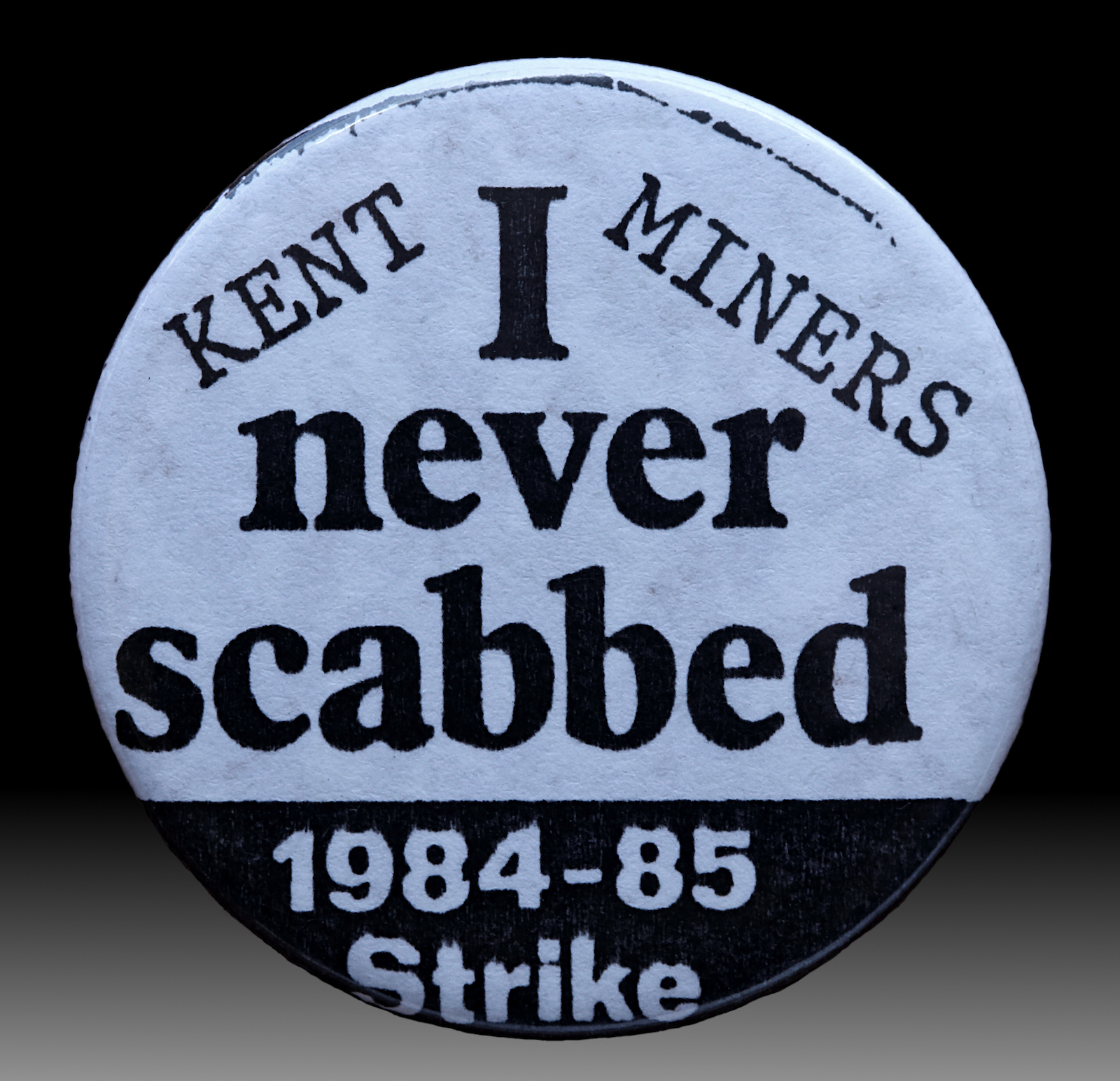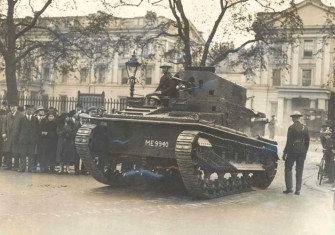How the Miners’ Strike Was Lost
Was Margaret Thatcher’s government close to defeat during the dark days of the miners’ strike of 1984-85?

Twenty years ago this autumn Britain was halfway through the miners' strike of 1984-85. There were regular skirmishes between police and miners around the picket Unes, as well as extensive media coverage of the attempts to achieve a negotiated settlement. But the country at large was remarkably unaffected. At no point were electricity supplies restricted. After almost a year the miners returned to work without achieving their objectives. The strike was a major political event in the course of Margaret Thatcher’s premiership, and the government’s victory gave an important boost to its programme to rein back the power of the trades unions. What has not been generally recognised, however, was how lucky the Government was to avoid defeat, as Edward Heath’s Government had been defeated by the mineworkers a decade before.
Coal played a dominant role in Britain's industrial development in the nineteenth century, and the struggles of the 1980s hinged upon the inheritance of that earlier era. Coal production rose rapidly with the development of the railway system, to a peak of 280 million tonnes in 1913, when 300 mines in Britain, employing over a million men, produced more than 20 per cent of the world’s entire output. However, coal is an extractive industry in which the most readily available reserves are taken first, leaving the harder-to-win resources for later. Consequently, the cost of extraction increases with the age of the mine. Eventually an old mine is abandoned, sometimes because it has become unsafe or has flooded, but often simply because the cost of extracting the mineral exceeds its market value. Moreover, older mines come under competitive pressures from new mines that are exploiting more recently discovered resources. So the world is full of abandoned mines. Mining, by its nature, is not a sustainable business.
In the case of coal, a further source of competitive pressure has come from other forms of fossil fuel. The advent of low-cost oil from the Middle East during the 1950s and 60s enabled much of industry to switch to the more convenient liquid fuel, while the discovery of gas under the North Sea allowed domestic consumers to make a similar change. This competition from oil and gas forced the British coal industry to contract, almost halving output over the course of fifteen years, although the pressure eased during the oil-market price hikes of the 1970s. As a consequence, in 1974 the government agreed to fund a substantial investment in the coal industry, with the aim of bringing on 40 million tonnes (mt) of new low-cost capacity. For the coal industry to be financially viable, old high-cost mines would need to be closed. Although this proved difficult to manage, the National Coal Board (NCB), operator of Britain’s nationalised coal industry, had achieved a steady rate of closures, without any involuntary redundancies, and with the acquiescence of the unions, at least up to 1982 when Arthur Scargill become President of the National Union of Mineworkers (NUM).
In the early 1980s over 80 per cent of Britain’s electricity was still generated from coal. Failure to close sufficient high-cost output, together with a lower demand for coal in the economic recession of the early 1980s, meant that coal stocks at the pithead were reaching record levels. In the summers of 1981–83, the Central Electricity Generating Board (CEGB) agreed to operate ‘accelerated coal delivery schemes’. Under these arrangements, surplus stocks were moved to the power stations, but the coal was not paid for until it was burned. Ostensibly, this was to ease the NCB’s problem of over-stocking at the pithead, but the additional costs were borne by the government, which was keen to build up power-station stocks in case of future industrial action by the miners, when pithead coal stocks would not be available for use. Mrs Thatcher’s government was strongly motivated to take precautions against the possibility of a miners’ strike. There had been two such strikes over pay in the 1970s, which had resulted in the rationing of electricity supplies. The 1974 action, moreover, had caused the defeat of Edward Heath’s Conservative government after he called a general election to seek endorsement of his policies.
Under Arthur Scargill, the NUM took a harder line against pit closures than had the previous leadership. It accepted that pits that were exhausted or unsafe could close, but it would not agree to shut mines with workable reserves solely on the grounds that these were not economic to extract. This stipulation was unacceptable to the NCB and to the government, which was reluctantly subsidising the industry.
The miners’ strike of 1984-85 was essentially about the closure of pits where the market value of the coal extracted fell short of the cost of production. The NCB wanted to continue the steady programme of colliery closures; the government endorsed this approach, but the NUM leadership resisted. The dramatic unfolding of events, particularly the mass picketing and the response of the police, is well known. The key point to stress here is that the strike was partial, not complete. The coal that continued to be produced by working miners played a crucial part in the defeat of their striking brothers.
Stocks of coal at power stations had reached the record level of 34 million tonnes in October 1983. They had diminished over the winter, with higher seasonal coal consumption, and as a result of an overtime ban by the NUM. But in March 1984 power-station stocks stood at 23 million tonnes. In the event of an interruption to coal supplies, the CEGB’s intention was to minimise coal-burn by maximising the use of oil firing, as well as of nuclear electricity generation. The CEGB had a number of oil-fired power stations, dating from the days of cheap oil, which could be brought into use. In addition, there was some scope for use of supplementary oil-burn at coal-fired plants.
Demand for electricity would start to fall in March, with the onset of longer days and warmer weather. In the event of an immediate all-out strike, the available power-station coal stocks, in combination with the measures to minimise coal burn, would maintain an uninterrupted supply of electricity for about six months – ample time, it seemed, in which to settle a miners’ strike from a position of strength. On the other hand, rationing of electricity would need to start well before power-station coal stocks approached exhaustion and the run-down of the stocks would be visible. The position of relative strength would therefore last only three months or so. This was much longer than previous miners’ strikes had lasted, but well short, as it turned out, of what the hard core of miners were prepared to endure in 1984-85. So had the strike been solid, and had no new coal supplies reached the power stations, the stamina of the striking miners would certainly have exceeded the endurance of the power stations, and the NCB and government would surely have had to back down.
But the strike was not solid. Under the NUM’s rules, a national strike could be called only if 55 per cent of members voted in favour in a national ballot. In the event, no national ballot was held, doubtless because the NUM leadership lacked confidence that the membership would vote in favour. Some area ballots took place, but none achieved 55 per cent in favour of a strike. For instance, in the large Nottinghamshire coalfield, 27 per cent voted for and 73 per cent against – a reaffirmation of support for traditional union policies. Pickets from striking areas attempted to spread the strike to non-striking mines, with some success. Nevertheless, a few weeks into the strike, at the end of March 1984, a significant proportion of the industry remained at work; out of a total of 170 pits, some 60 pits were working to some degree, most of them in the major Notts and Midlands coalfields. NCB coal supplies to the CEGB built up from 300,000 tonnes per week in early April, to 450,000 tonnes by the end of May and to 650,000 tonnes by September.
Power station coal stocks stabilised during the summer. By the early autumn the CEGB was confident of getting through the coming winter without power cuts. A slow drift back to work in striking pits accelerated sharply in November. The CEGB successfully coped with record levels of electricity demand in January 1985.
By February the number of non-striking NUM members passed 50 per cent. A delegate conference on March 3rd ordered the return to work without a settlement, which took place in the 51st week of the strike.
The miners had a slogan: ‘The miners united will never be defeated.’ There was much truth in this. The NUM lost the strike because it was not united. It was also counter-productive to start a strike in the spring. Had the strike been solid, and had it started in the autumn, it is hard to see what could have prevented victory for the miners. The government was lucky that Arthur Scargill’s ill-judged tactics divided a union with a strong tradition of solidarity. Had the union been united in the strike, the consequences for Mrs Thatcher’s government would have been stressful, to say the least. Subsequent British domestic history would surely have been different.
Strategically, a victory for the miners would have delayed, but not ultimately prevented, the contraction of the British coal industry. Quite apart from the economics of extraction, environmental and health issues were beginning to constrain coal mining towards the end of the last century. Goal is the richest in carbon of all the fossil fuels, and thus makes the greatest contribution to global warming. It is also the most polluting. For these reasons natural gas has become the preferred fuel for electricity generation. Coal mining is a particularly unhealthy occupation. Respiratory disease and disability caused by machine vibration have prompted some 600,000 claims for compensation worth £7 billion in total. Throughout Europe, deep-mined coal production has shrunk and ceased. There is a historic inevitability about the decline of an extractive industry, despite the glory days it has seen.
David Metz is honorary professor in the Centre for Transport Studies at UCL. He was a civil servant in the Department of Energy at the time of the miners’ strike.






